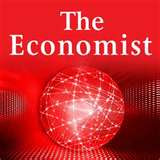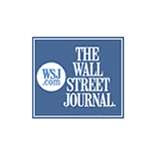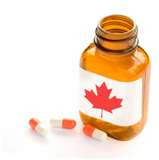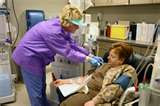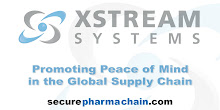
Roger Bate, long considered one of the foremost authorities on counterfeit and fraudulent medications around the globe gave a speech to Harvard Medical School, Department of Population Medicine, Drug Policy Research Group on March 3, 2010.
The American Enterprise Institute for Public Policy Research recently published the text of the speech online.
In this excellent speech, Mr. Bate explores, as the cause, consequences and possible solutions for fighting this deadly global epidemic.
Here are some interesting highlights from the speech:
· Although it's easy to buy fake drugs over the Internet, focusing on the dangers is not helpful. We should be helping people know which sites sell good drugs.
· As we've seen above most counterfeiters are most interested in the packaging--the product must look the part (whether it's a Louis Vutton purse, a Rolex watch or an antibiotic).
· Some fake drugs are hardly fake in a quality sense at all, being made in very good conditions; often midnight runs in an otherwise legitimate organization. Indeed, some obviously try to make great copies since they want repeat business. But often they're really unhygienic, even if they're made with the correct ingredients.
· (Mr. Bate’s into three drug catagories) direct, indirect and long run impacts. Drugs can kill directly; if they have heavy metal, bacterial, fungal or other contamination (over-sulfated chondroitin sulfate contaminated heparin was the cause of a hundred US deaths two years ago). Drugs without active ingredients (such as the fake Cipro we saw before) allow people to die from otherwise treatable infections (this kills the most people, tens of thousands, even hundreds of thousands in poor nations). And drugs with some active ingredient may accelerate the process of natural selection of more robust microbes to previously effective drugs.
· The few counterfeiters I've spoken with, think nothing of making Rifampicin with 25% or 40% active ingredient to pass simple dye tests (they will quote prices to you based on API concentrations), and given Rifampicin's BCS classification and its problems of solubility--anything less than good manufacture will probably encourage resistance, possibly contributing to MDR-TB.
· The economics is quite simple, the demand for drugs runs into hundreds of billions of dollars globally, and the returns to fakery can be vast.
· So why is it that such traders can flourish? Take Viagra. It costs $60/kg to buy in China or India, and one kg on prescription in 25 mg tablets in US would sell for up to $200,000. That is a vast mark up and to some it's worth the risks.
· Counterfeiting immediate etymology comes from the French contrefait, to imitate, and it is largely a legal definition, not one derived for public health. Although there is no universally agreed upon definition, the WHO’s the most widely cited. And it is largely a matter of labeling, and the faking of a label (often but not always a trademark) that defines a product as counterfeit. Some countries, such as China, require demonstration of harm from the product for a charge of counterfeiting to stick.
· …going after criminals might be the best policy action for importers into the rich world, but may not address the major problems in mid-income and poorer nations.
· NAFDAC has done a great job. As the authority in charge of combating fakes in Nigeria it has probably overseen a reduction in fakes in the past few years from maybe 40% to far less than 20%. (My own sampling using visual identification, TLC and disintegration, showed failure rates of 32% in 2007, 16% in 2009 and just now I think about 8-10%--but the counterfeiters may be coming more sophisticated and adding enough API to fool simple tests, such as assays with thin layer chromatography--but there is little doubt quality improvements have occurred across Nigeria thanks to NAFDAC).
· Corporations do a good job to defend their brands and this does help in improving quality, but they are woeful at releasing that information and make it hard to know where faking is taking place. Company lawyers prevent PowerPoint presentations and other information from being used by others to improve knowledge and scholarship in this area. The Pharmaceutical Security Institute, comprised of big Pharma, almost certainly has the best data on fake drugs but unless you're a Pharma member you can't access it.
· Probably the single biggest problem in the developing world is the lack of State support for good federal laws in China and India. Drug manufacturing is regulated by the states in both countries and the federal agents can do nothing if state agents do not wish to enforce the laws properly.
Mr. Bate in this speech and its text is probably the most up-to-date global analysis of this growing epidemic. His statistics and updates are very relevant for those involved in the pharmaceutical global supply chain.
Secure Pharma Chain Blog endorses his conclusions and encourages the integration of technologies within the various pharmaceutical supply chain as one of the more robust ways in diluting and ultimately eradicating the issue of fraudulent, adulterated and counterfeit medications.







